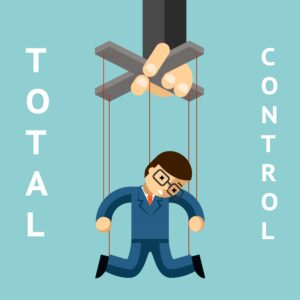Introduction
Have you ever felt too hurt when someone ignores you? Or does even a small criticism make you feel like a failure? If yes, you may be dealing with something called Rejection Sensitivity Dysphoria, also known as RSD.
RSD is not just about being sensitive. It’s a strong emotional reaction to rejection, failure, or criticism. It’s often seen in people with ADHD.
In this post, we’ll explain what Rejection Sensitivity Dysphoria is, how it feels, why it happens, and how you can handle it better.
What is Rejection Sensitivity Dysphoria?
Rejection Sensitivity Dysphoria (RSD) means feeling very hurt by real or imagined rejection or criticism. Even small negative comments can feel like personal attacks.
Quick Definition:
Rejection Sensitivity Dysphoria (RSD) is a strong emotional reaction to the feeling of being rejected, criticized, or left out.
The word “dysphoria” means “intense sadness or discomfort.”
People with RSD may feel:
- Ashamed
- Worthless
- Angry
- Embarrassed
- Like giving up
How is RSD Connected to ADHD?
RSD is common in people with ADHD. ADHD stands for Attention Deficit Hyperactivity Disorder. It affects how the brain processes emotions and attention.
Many experts believe RSD happens more in ADHD because:
- The ADHD brain has trouble regulating emotions
- Rejection feels stronger and more personal
- People with ADHD may have a history of being misunderstood
So, not everyone with ADHD has RSD, but many do.
What Does Rejection Sensitivity Feel Like?
People with Rejection Sensitivity often feel:
| Trigger | Emotional Reaction |
|---|---|
| Small criticism | Feels like deep failure |
| A joke or teasing | Taken personally or as an attack |
| Not being invited | Feels like nobody likes you |
| Someone ignoring a text | Feels like you’re being abandoned |
| Saying the wrong thing | Leads to shame and self-blame |
Sometimes, even imagined rejection can cause a full emotional breakdown.
Common Signs of Rejection Sensitivity Dysphoria
How do you know if you or someone you know has RSD? Here are some signs to look for:
Emotional Signs
- You cry easily after negative feedback
- You avoid social situations to prevent rejection
- You feel angry when someone criticizes you
- You keep thinking about what you did wrong
Behavior Signs
- You lash out or become quiet and withdrawn
- You try too hard to please everyone
- You overthink small things people say
- You may quit jobs or relationships too quickly
These reactions are not attention-seeking. People with RSD really feel emotional pain that’s hard to manage.
RSD vs. Being “Too Sensitive”
You might hear people say, “You’re just too sensitive.”
But Rejection Sensitivity Dysphoria is not just normal sensitivity. It’s intense, sudden, and painful. It can feel like an emotional injury, not just hurt feelings.
It’s important to know the difference:
| Normal Sensitivity | Rejection Sensitivity Dysphoria (RSD) |
|---|---|
| You feel bad, but recover soon | You feel crushed and stay upset for hours or days |
| You know it wasn’t personal | You feel like it was aimed directly at you |
| You may talk about it | You often hide your pain or overreact |
What Triggers RSD?
1. Criticism (Even if It’s Kind)
One of the biggest triggers for Rejection Sensitivity is any form of criticism—even if it’s meant to help.
For example:
A boss says, “This report is good, but let’s fix this one section.”
A friend says, “You talk over me sometimes.”
To someone without RSD, this might feel like helpful feedback. But to someone with Rejection Sensitivity Dysphoria, these words can feel like a personal attack, sparking shame, embarrassment, and the belief that they’re a failure.
This reaction is especially common in people with ADHD, who may already struggle with self-esteem and emotional control.
2. Being Ignored or Left Out
Social rejection—whether real or just perceived—is a major trigger of RSD.
Examples include:
Not being invited to a party
A friend not replying to a message
Coworkers chatting without including you
Even if there’s a simple explanation (they forgot, they were busy), people with Rejection Sensitivity Dysphoria may instantly think:
“They don’t like me.”
“I must have done something wrong.”
“I’m being rejected.”
This kind of emotional response can lead to overthinking, withdrawal, or even anger.
3. Public Failure or Embarrassment
People with Rejection Sensitivity are often perfectionists. They try hard to avoid failure—not because they want to be the best, but because they fear rejection if they make a mistake.
Common RSD triggers in public settings:
Giving a wrong answer in class
Forgetting lines during a presentation
Being corrected in front of others
Even small mistakes can cause deep emotional wounds. It’s not just “embarrassment”—it’s an intense feeling of unworthiness.
This trigger is often stronger in people with ADHD, who may already feel “different” or “not good enough” in school or work environments.
4. Conflict or Disagreement
Another common RSD trigger is conflict—whether it’s with family, friends, or coworkers.
Let’s say someone disagrees with your opinion. To most people, it’s just a normal conversation. But for someone with RSD, it might feel like:
They’re being rejected as a person
The other person doesn’t respect or like them
They need to withdraw or defend themselves harshly
Even small disagreements can spiral into emotional shutdowns or outbursts.
5. Social Media and Online Comparison
In today’s world, social media is a constant source of Rejection Sensitivity triggers:
Seeing others getting praise or attention
Not receiving likes or comments
Misinterpreting online tone in messages
For someone with RSD, these things don’t just feel disappointing—they feel like proof of unworthiness.
Is RSD a Medical Diagnosis?
No. Rejection Sensitivity Dysphoria is not a formal diagnosis in medical books like the DSM-5 (used by psychologists). But it is recognized by many ADHD experts.
Doctors may not always use the word “RSD,” but they understand these emotional challenges are real, especially in ADHD.
How to Manage Rejection Sensitivity Dysphoria
1. Understand Your Feelings (But Don’t Believe Every Thought)
People with RSD often feel things more deeply than others. These emotions are real—but sometimes they’re based on fear, not facts.
You might think:
“They’re upset with me.”
“I messed everything up.”
“I’m not good enough.”
But those thoughts are often automatic reactions, not truths. So next time you feel rejected, pause and ask yourself:
- “What proof do I have?”
- “Could there be another reason?”
- “Would I say this to a friend?”
This small mental shift can help stop Rejection Sensitivity from running your day.
2. Learn About RSD and ADHD
One of the best ways to manage RSD is to understand it. When you know what it is and how it connects to ADHD, you realize:
- You’re not too emotional
- You’re not broken
- Your brain is wired to react this way—but you can still change how you respond
Read books, watch videos, or talk to professionals. The more you understand, the more compassion you’ll have for yourself.
3. Use Grounding and Calming Tools
RSD can cause fast, intense emotional storms. But you can learn to regulate your emotions with simple calming tools.
Try this when you feel overwhelmed:
- Box breathing: Breathe in for 4 seconds, hold for 4, exhale for 4, hold for 4. Repeat.
- Grounding: Notice 5 things you can see, 4 things you can touch, 3 you can hear, 2 you can smell, and 1 you can taste.
- Cold water splash: Splashing cold water on your face can reset your nervous system.
These are small but powerful ways to pull your body out of emotional panic.
4. Talk Honestly About Your RSD
People with Rejection Sensitivity Dysphoria often hide their feelings because they’re scared of being “too much.” But hiding pain only makes it grow.
Try telling a trusted person:
“Sometimes I take things personally, even when I don’t want to. It’s something I’m working on.”
When others understand your Rejection Sensitivity, they can support you better. You’ll also feel safer being yourself.
5. Practice Positive Self-Talk
Your inner voice matters. If you’re constantly telling yourself:
- “I’m a failure.”
- “No one likes me.”
- “I ruin everything.”
…then your brain will believe it.
Instead, try saying:
- “I did my best today.”
- “I’m learning to handle things differently.”
- “One moment doesn’t define me.”
Over time, kind words to yourself build confidence—and confidence softens the pain of rejection.
6. Explore Therapy and ADHD Treatment
Therapy is a powerful tool for managing Rejection Sensitivity Dysphoria. A good therapist can help you:
- Understand your emotional reactions
- Challenge negative thought patterns
- Create tools to handle rejection in a healthy way
7. Try CBT (Cognitive Behavioral Therapy)
Cognitive Behavioral Therapy (CBT) is one of the best therapies for RSD. It teaches you how to:
- Notice automatic thoughts
- Question if they’re true
- Replace them with more realistic thoughts
Example:
- Old thought: “She didn’t text back. She must hate me.”
- New thought: “She might be busy. It doesn’t mean she dislikes me.”
CBT helps you change how you talk to yourself, so rejection hurts less and feels less personal.
8. Be Careful With Social Media
Social media is full of triggers for Rejection Sensitivity:
- Not getting likes
- Seeing others hang out without you
- Comparing your life to others
Limit your screen time. Unfollow accounts that make you feel bad. Follow creators who talk about ADHD, mental health, and self-compassion.
Remember, what you see online is not the full story.
9. Build Strong Self-Worth (One Step at a Time)
The stronger your self-esteem, the weaker RSD’s power.
You can build self-worth by:
- Celebrating small wins (even brushing your teeth counts)
- Doing things that make you feel capable (like art, sports, reading)
- Keeping a “kind words” journal with compliments people have given you
- Surrounding yourself with people who appreciate you
This isn’t about becoming “perfect”—it’s about realizing you’re enough, even with your sensitivity.
10. Set Healthy Boundaries
If you’re always around people who criticize, ghost, or belittle you, your Rejection Sensitivity will stay on high alert.
Protect yourself by setting boundaries:
- Say no when something doesn’t feel right
- Limit time with toxic people
- Choose peace over pleasing
11. Join a Support Group
Talking to people who understand what you’re going through can be life-changing.
Look for:
- ADHD support groups
- Online communities for RSD
- Mental health forums or meetups
When you share your story—and hear others’—you’ll realize you’re not strange, broken, or alone. You’re part of a community that gets it.
Conclusion
Rejection Sensitivity Dysphoria is real, and it can hurt deeply. But you are not broken. You just feel emotions more strongly than others.
If you have ADHD, RSD may be part of your experience. But with the right help, you can learn to manage it, understand it, and grow through it.
You don’t need to fear rejection forever. Healing starts with understanding—and you’ve already taken the first step.
Other Related Reads:
- What Is Silent Trauma? Signs, Examples, Solutions
- What Is Guilt Tripping?
- What Is Love Bombing?
- Emotional Intelligence: The Skill That Changes Everything
- Mental Health Is More Than What You Think
- Consciousness: The Mystery Beyond Brains
- The Psychology of Depression and Overthinking




